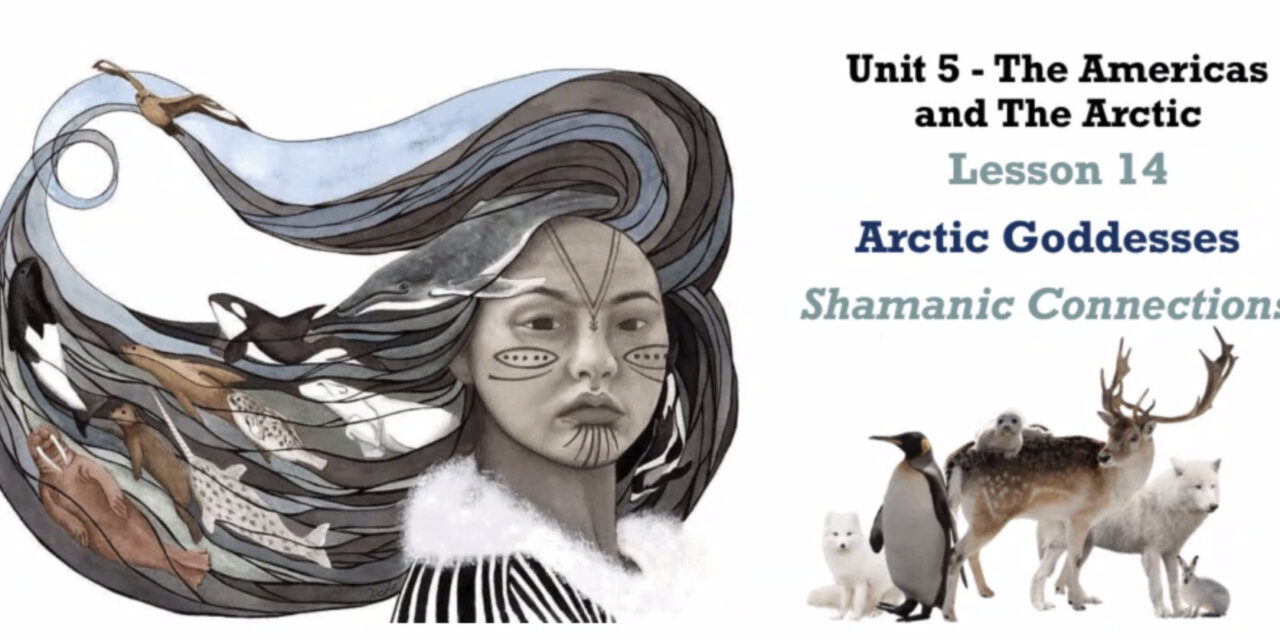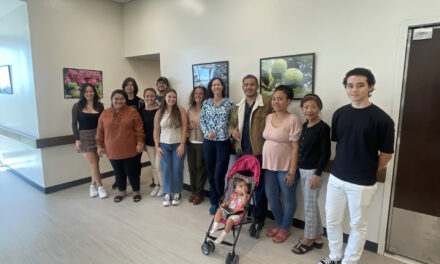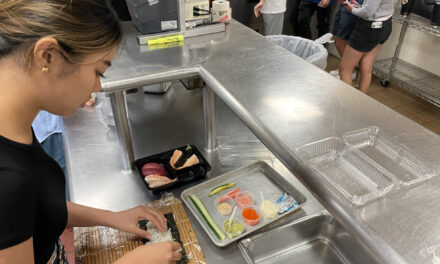Professor Amanda Candēns, the instructor for REL 149, teaches about goddesses from over 17 cultures. Pictured above is the Arctic goddess, Sedna. (Photo courtesy of Antony Galbraith and Amanda Candēns)
By Cameron Enomoto | Staff Writer
Every professor has their own way of supporting the students that take their courses. Professor Amanda Candēns, the instructor for Introduction to the World’s Goddesses (REL 149), covers content in a way that instills courage and resilience in her students, over 90% of whom are female. Out of 35 students, there are usually 2 or 3 male students.
“The majority of students in my class identify as female, and I am thrilled when these women walk away with a sense of empowerment and confidence,” Candēns said.
REL 149 became available to KCC students in Fall 2021 and has been offered at UH Mānoa since 2017. The course provides a cross-cultural analysis of the religious narratives, beliefs, practices, iconography, and sacred sites related to female deities in the Americas, Polynesia, Asia, the Middle East, Africa, and Europe from prehistory to 1500. Students will be able to gain a broader overview of the cultural traditions, religious beliefs, and practices surrounding female deities around the world.
Throughout the course, students will analyze narratives, devotional practices, theologies, iconographies, and the sacred sites of female gods and how they are located within their respective cultural milieu. Students will also examine the historical and geographical origins that situate the deities covered as well as the dominant religious motifs evident through cross-cultural analysis.
“I just fell in love with Hawaiian goddesses, akua wahine, so much,” Candēns said. “It piqued my curiosity and I wondered, ‘Well are there goddesses this amazing in other cultures?’”
Candēns created the course as part of her master’s thesis in graduate school at UH Mānoa and spent many years researching the curriculum prior to its completion. Candēns is a non-traditional student and began pursuing a 4-year degree when she was in her mid-30s. She completed her bachelor’s in Hawaiian studies at UH Mānoa and holds a master’s degree in Comparative World Religions, also from UH Mānoa. Additionally, Candēns earned a graduate certificate through the UH Mānoa College of Education specializing in online teaching.
“My course is entirely asynchronous, though I do have platforms for students to interact with one another if they choose,” said Candēns. “I have found that a lot of my students crave connecting with their classmates and I have live discussions where they are able to explore content and build their relationships at the same time.”
Candēns provides audio recordings to go with assigned readings and organizes coursework so that necessary materials can be accessed easily.
“I have the same layout every week for the videos, readings, assignments, and quizzes,” Candēns said. “For students who are having a difficult time I recommend doing the readings with the audio as well. Most of the time their grades improve, but I think one of the more important things is what students take away from the class.”
The first half of the course focuses on ancient goddesses and the second half covers indigenous goddesses. Some ancient cultures include Egypt, Greece, and Mesopotamia. The popular indigenous cultures that Candēns covers include Hawaiian and Māori goddesses. In addition to being offered at KCC, the REL 149 course is also offered to UH Mānoa students. The follow-up course, Women and Religion (REL 356), is centered around powerful priestesses, saints, and significant human women who worshipped the goddesses covered in REL 149.
One session of REL 149 is offered to students every semester. Candēns has shared that the summer course rarely reaches the capacity of 35 students, and it will be offered over the course of 12 weeks versus a six-week session. For students who have additional inquiries about the course, please contact Candēns at candens@hawaii.edu.






